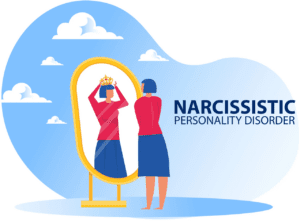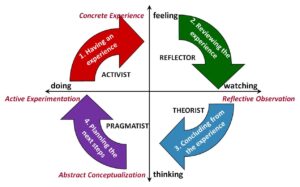What is Social Competence?
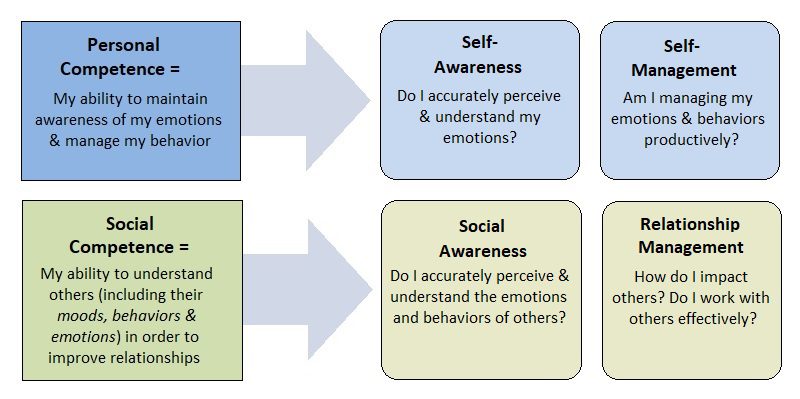
Social Competence is defined as the ability to handle social interactions effectively.
It is the condition of possessing the social, emotional, and intellectual skills and behaviors needed to succeed as a member of society.
Social Competence is about getting along well with others, forming and maintaining close relationships, and responding adaptively in social settings.
Given the complexity of social interactions, social Competence is the product of a wide range of cognitive abilities, emotional processes, behavioral skills, social awareness, and personal and cultural values related to interpersonal relationships.
To complicate the understanding of this concept further, social Competence is dependent on the following:
- Developmental characteristics – i.e., social competence expectations vary by a person’s age.
- Specific social situation – i.e., people may be socially competent in one case but not in another, or a child may appear more competent when interacting with a socially skilled partner than with a shy person.
- Cultural characteristics – i.e., specific acts of social Competence are bound by cultural expectations.
Social Competence has been conceptualized as consisting of six categories of Competence:
- Adoption of social values.
- Development of a sense of personal identity.
- Acquisition of interpersonal skills.
- Learning how to regulate individual behavior following societal expectations.
- Planning and decision-making.
- Development of cultural Competence.
Self-Regulation
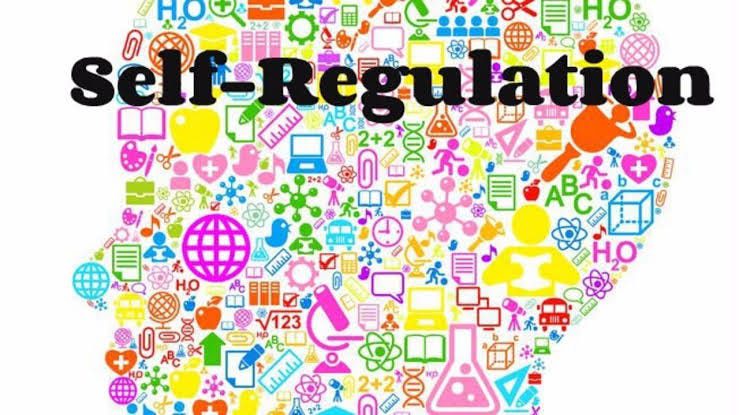
Social Competence includes self-regulation, controlling impulses, delaying gratification, resisting temptation and peer pressure, reflecting on one’s feelings, and monitoring oneself.
Much of self-regulation involves managing your emotions.
Emotional regulation is “the extrinsic and intrinsic processes responsible for monitoring, evaluating, and modifying emotional reactions… to accomplish one’s goals”.
This ability to regulate emotions develops from interaction with primary caregivers, the child’s inborn temperament, and the match between caregiving and character.
For children, difficulties with self-regulation may look like this:
- Frequent meltdowns or tantrums.
- Trouble focusing on or transitioning between activities.
- Physical aggression or inappropriate behaviors with others.
- Difficulty calming down after something exciting or active play.
- Demanding things immediately.
For adults, difficulties with self-regulation may look like this:
- Lashing out at others.
- Trouble calming down after an upsetting situation.
- They have a hard time communicating their emotions.
- Difficulty maintaining self-control.
- Becoming verbally or physically aggressive quickly.
Seven Key Principles of Self-Regulation
- Self-regulation is the foundation for lifelong functioning across various domains, from mental and emotional well-being to academic achievement, physical health, and socioeconomic success. It has also proven responsive to intervention, making it a potent target for change.
- From an applied perspective, self-regulation is defined as managing cognition and emotion to enable goal-directed actions such as organizing behavior, controlling impulses, and solving problems constructively.
- Individual and external factors, including biology, skills, motivation, caregiver support, and environmental context, influence self-regulation enactment. These factors
interact with one another to support self-regulation and create opportunities for intervention. - Self-regulation, such as literacy, can be strengthened and taught with focused attention, support, and practice opportunities provided across contexts. Skills not developed early on can be acquired later with multiple intervention options.
- The development of self-regulation depends on “co-regulation” provided by parents or other caregiving adults through warm and responsive interactions in which support, coaching, and modeling facilitate a child’s ability to understand, express, and modulate thoughts, feelings, and behavior.
- Self-regulation can be disrupted by prolonged or pronounced stress and adversity, including poverty and trauma experiences. Although manageable pressure may build coping skills, stress that overwhelms children’s skills or support can create toxic effects that negatively impact development and produce long-term changes in neurobiology.
- Self-regulation develops over an extended period from birth through young adulthood (and beyond). However, there are two clear developmental periods where self-regulation skills increase dramatically due to underlying neurobiological changes– early childhood and adolescence – suggesting particular opportunities for intervention.
What Is Behavioral Self-Regulation?
Behavioral self-regulation is “acting in your long-term best interest, consistent with your deepest values” (Stosny, 2011). It is what allows us to feel one way but act another.
If you’ve ever dreaded getting up and going to work in the morning but convinced yourself to do it anyway after remembering your goals (e.g., a raise, a promotion) or your basic needs (e.g., food, shelter), you displayed effective behavioral self-regulation.
What Is Emotional Self-Regulation?
On the other hand, emotional self-regulation involves control of—or at least influence over—your emotions.
If you have ever talked yourself out of a bad mood or calmed yourself down when angry, you have displayed effective emotional self-regulation.
What is Self-Regulation Theory?
Self-regulation theory (SRT) outlines the process and components involved when we decide what to think, feel, say, and do. It is particularly salient in the context of making a healthy choice when we strongly desire to do the opposite (e.g., refraining from eating an entire pizza just because it tastes good).
According to modern SRT expert Roy Baumeister, there are four components involved (2007):
- Standards of desirable behavior;
- Motivation to meet standards;
- Monitoring of situations and thoughts that precede breaking standards;
- Willpower allows one’s internal strength to control urges.
These four components interact to determine our self-regulatory activity at any given moment. According to SRT, our behavior is determined by our standards of good conduct, our motivation to meet those standards, the degree to which we are consciously aware of our circumstances and actions, and the extent of our willpower to resist temptations and choose the best path.
Self-Regulation Versus Self-Control
You’re correct if you think self-regulation and self-control have much in common. They are similar concepts and deal with some of the same processes. However, they are two distinct constructs.
As psychologist Stuart Shanker (2016) put it:
“Self-control is about inhibiting strong impulses; self-regulation [is about] reducing the frequency and intensity of strong impulses by managing stress-load and recovery. In fact, self-regulation is what makes self-control possible, or, in many cases, unnecessary.”
Viewed in this light, we can think about self-regulation as a more automatic and subconscious process (unless the individual determines to monitor or alter their self-regulation purposefully). At the same time, self-control is a set of active and purposeful decisions and behaviors.
Interpersonal Knowledge and Skills
Social Competence also includes understanding others’ needs and feelings, articulating one’s ideas and needs, solving problems, cooperating and negotiating, expressing emotion, “reading” social situations accurately, adjusting behavior to meet the demands of different social situations, and initiating and maintaining friendships.
Interpersonal skills are soft skills. We use them when interacting and communicating with others to help start, build, and sustain relationships.
Sometimes called people skills, these are innate and learned skills used in social situations pertinent to your career, education, and personal life.
According to the Partnership for 21st Century Skills, these skills include working creatively with others, communicating clearly, collaborating, adapting to change, being flexible, interacting effectively with diverse teams, guiding and leading others, and being responsible.
Such skills enable us to interact with others effectively in the workplace, at school, or daily. These are some of the most common interpersonal skills:
- Communication
- Empathy
- Emotional intelligence
- Conflict resolution
- Negotiation
- Listening
- Positive attitude
- Teamwork
- Collaboration
- Leadership
- Networking
- Mediating
- Persuasion
- Motivation
Most people already possess many of these in some capacity—even introverted individuals, who may become drained from too much social interaction yet are observant, intuitive, and adept when interacting with others.
However, there is always room for improvement. Developing self-awareness and an openness to learning is an excellent first step to strengthening your interpersonal skills.
Positive Self-identity
Social Competence also includes positive Self-Identity, an intrapersonal category of social Competence that consists of a sense of Competence, personal power, Self-Worth, and purpose.
Self-identity refers to how you identify and define yourself. Fundamentally, it answers the question: who am I?
Your Self-Identity encompasses everything about you. It combines all your personality traits, physical attributes, and interests.
Self-identity is closely linked and very important to good mental health. For example, having a positive self-identity can help improve your mental health and increase confidence.
On the other hand, a negative Self-Identity can lead to a lack of Self-Worth and spur mental health problems such as anxiety and insecurity.
As we navigate our lives, we develop our identity, which makes us unique and distinguishes us from everyone else.
However, building a healthy self-identity can be a difficult task.
Build positive relationships
It is estimated that more than 50% of young people often worry about what others think of them. These worries may seem small at first, but with time, they can blow up into debilitating anxiety.
To foster a positive self-identity, you must surround yourself with people who value and respect you.
This is echoed in current research, which shows positive social relationships can help improve Self-Esteem.
Situating yourself in a supportive, uplifting environment will make you feel more confident and secure.
Self-reflection
If you ever feel Self-Doubt, you must understand the underlying cause.
If left unattended, these insecurities can build up and seep into your everyday life, negatively impacting your personal and professional ambitions.
Self-reflection is a great way to understand how and why you feel the way you do.
Taking the time to look inward and seriously consider your behaviors can be an effective way to identify the source of these insecurities.
Once you understand the cause of these troublesome feelings, you can divert your attention to other matters.
Positive affirmation
Self-affirmation is an effective technique for building a healthy Self-Identity. Self-affirmations are positive acts used to challenge negative thoughts, enabling you to move beyond threats to your self-identity.
Research shows that Self-Affirmation can lower anxiety, stress, and rumination. It is also beneficial for improving academic performance and health. But how do you practice Self-Affirmation?
Practicing Self-Affirmation can be a simple process. All you need to do is give yourself constant encouragement.
These can be verbal reminders, like saying something positive to yourself each morning, or physical reminders, such as leaving positive notes on your desk at work.
When combined, these positive reminders will cheer you up and help you accept yourself for who you are.
Cultural Competence

Social Competence also includes developing cultural Competence, acquiring knowledge of, respecting for, and interacting effectively and comfortably with people of varying ethnic or racial backgrounds.
It also includes recognizing and questioning the unfair treatment of others and acting for social justice.
Current research on cultural Competence focuses on sensitivity to cross-cultural differences, the ability to adapt to other cultural environments, and reflective awareness of cultural influences on one’s thoughts and behaviors.
Muzychenko (2008) defined cultural Competence as the appropriateness and effectiveness of one’s behavior in an alien cultural environment.
Wilson, Ward, and Fischer (2013) described cultural Competence as the acquisition and maintenance of culture-specific skills:
- Function effectively within a new cultural context.
- Interact effectively with people from different cultural backgrounds.
Williams (2001) defined cultural Competence as the ability of individuals to work or respond effectively across cultures in a way that acknowledges and respects the culture of the person or organization being served.
Developing cultural Competence helps us understand, communicate with, and effectively interact with people across cultures.
In addition, it allows us to compare different cultures with our own and better understand the differences.
Unconsciously, we bring our cultural frame of interpretation to any situation.
Adopting Social Values

This Social Competence component encompasses caring, equity, honesty, social justice, responsibility, healthy lifestyles, and flexibility.
Social values are likely to vary by culture. Some fundamental values may exist from culture to culture, yet these may be valued to different degrees and proportions.
Your values guide your actions and provide whole meaning to your life when you live in harmony with them.
Accordingly, values perform the same functions in society as on a personal level. They give direction to the behavior of individuals and groups within the social structure.
Social values are qualities, attitudes, and standards that individuals and groups use to guide their actions. These values are the foundation for establishing social order within groups.
Through them, a society determines what’s acceptable, what should be done, and what’s desirable.
Social values carry with them a set of implicit and explicit conceptions about a subject’s desire and action within the social fabric of society.
Thus, they set the tone for social behavior according to the context and the situation. These values encourage citizens to align their actions with society’s character.
Types of Social Values
Social values can vary from one group to another and society to another. However, some can be extended to every culture.
- Respect. It allows a person to recognize, accept, appreciate, and value the qualities of others and their rights.
- Honesty. A social value characterized by telling the truth, being decent, modest, respectful, and fair.
- Justice. Being equitable and giving each individual what’s due to them.
- Tolerance. Respect for the beliefs and practices of other people when they’re different from our own.
- Goodness is the tendency to do good. It also implies a considerable degree of compassion, of being and suffering with the other person and looking for ways to alleviate their pain.
- Freedom. Power to act according to one’s criteria, within societal limits.
- Love. The value that motivates a person to care, respect, and commit to the well-being of others without expecting a benefit in return. It means stepping outside ourselves to meet and love others as they are.
- Tolerance. The willingness to accept and respect the ideas, opinions, and attitudes of others, even if we disagree with them.
- Education is one of the most important values because it can teach other values. Education involves the correct formation of people, both intellectually, emotionally, and morally.
Planning and Decision-making Skills
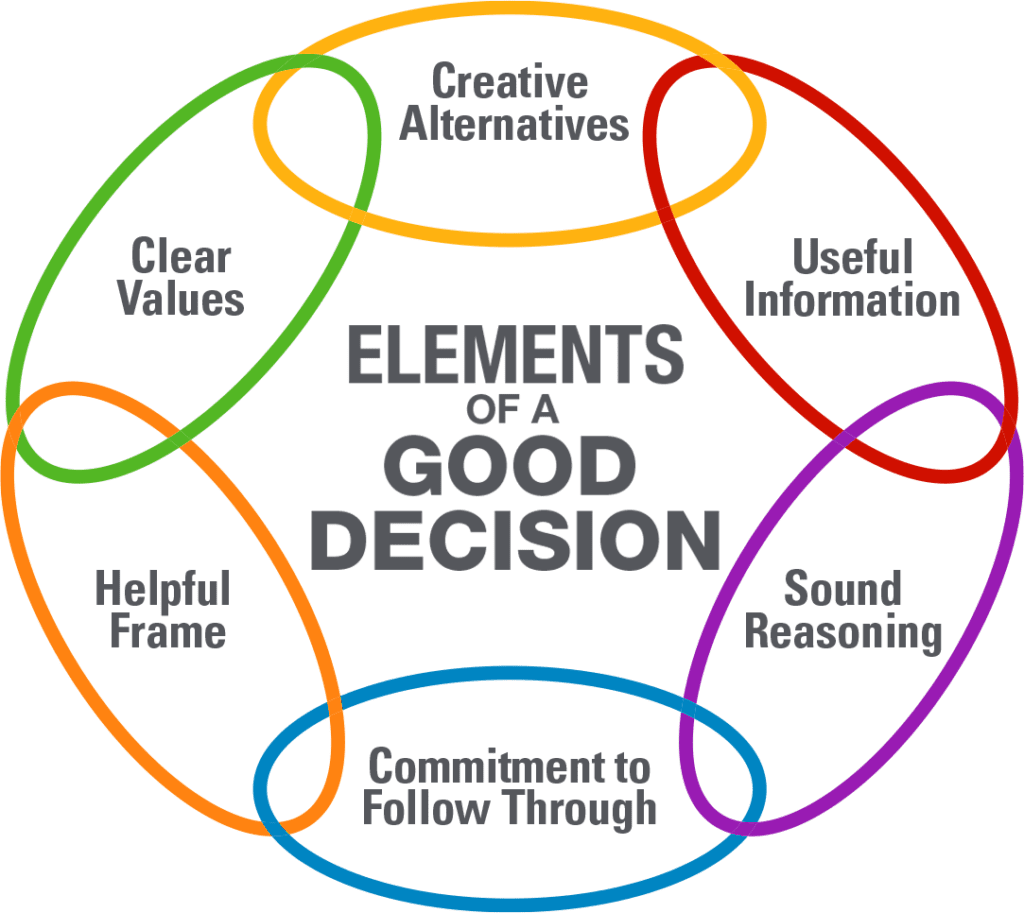
Another critical component of Social Competence is the ability to act purposefully by making choices, developing plans, solving problems, and carrying out positive actions to achieve social goals.
You will hardly go wrong with your professional and personal growth decisions if you possess sound decision-making skills.
An individual can learn and improve decision-making skills with time and experience. A few Skills which you need to make a good decision are:
- Active listening.
- Interpersonal skills.
- Good Communication skills.
- Critical Thinking skills.
- Problem-Solving skills.
- Analytical Thinking skills.
1. Using Rational Thinking
Draw together all the information about the situation
First, understand the problem or situation. Talk with those involved and try finding all the information you need to make a good decision.
Prioritize the essential pieces of information first and then decide on available data.
Avoid making impetuous or emotional decisions.
If you are emotionally involved in the issue and make decisions based on emotions, then your decision-making skills can be questioned.
So, when you know you may act out of emotion, take a step back and use careful, rational thinking instead.
Give yourself time before making a decision.
Often, you may feel rushed to make decisions. The decision can be big or small, but as all decisions are important, it is better to take time and carefully examine them before making your decision.
Look at the situation from a short-term and long-term perspective.
Often, people are so focused on short-term problems that they don’t consider the situation from a long-term perspective.
Being short-sighted will probably have a negative impact in the long run. So, think from both perspectives and use rational thinking to make good decisions.
2. Finding Support and Advice
Talk with friends, family, or experts.
If you find it hard to decide, consider getting help and support from family, friends, experts, or people who can clarify a tricky situation.
People who have faced a similar problem or concern may suggest the best solutions and try to get their help.
Write the pros and cons.
This is the most common and effective decision-making technique. But first, write down all the positive and negative aspects of the problem on a paper and analyze it carefully.
If you are still unable to decide, seek advice from experienced people and then make your own decision.
3. Evaluating Your Options
Know the costs and benefits of the situation.
Whether buying something, planning your career, or making life decisions, assessing each decision’s costs and benefits is essential. Knowing the pros and cons of the situation can help you quickly do this.
It will also help you understand how your decision may affect you financially, professionally, emotionally, or physically.
Look for alternative solutions.
Find all the alternative solutions to every situation or problem. Then, make your Plans A, B, and C.
This will help you make the right decision, as you can analyze the entire outcome if you have alternative solutions. If plan A does not work, you have a backup plan, which can also come in handy.
Be prepared for the possibility of errors.
Being prepared for the possibility of error that could arise anytime during the problem will make you less stressed.
Have a backup plan in your head so you are not surprised by any error, and also plan for a “worst-case scenario” about a situation.
4. Make Your Move
Choose among alternatives and take action:
After all the evaluation, you must select the best solution for the situation. If necessary, you can combine two or more alternatives. Then, you must make your decision.
Review your decision and its effects:
After you make a decision using your decision-making skills, review the result or outcome to see if you have made the right decision.
If unsatisfied with the outcome, you must repeat a few steps to make a new decision.


